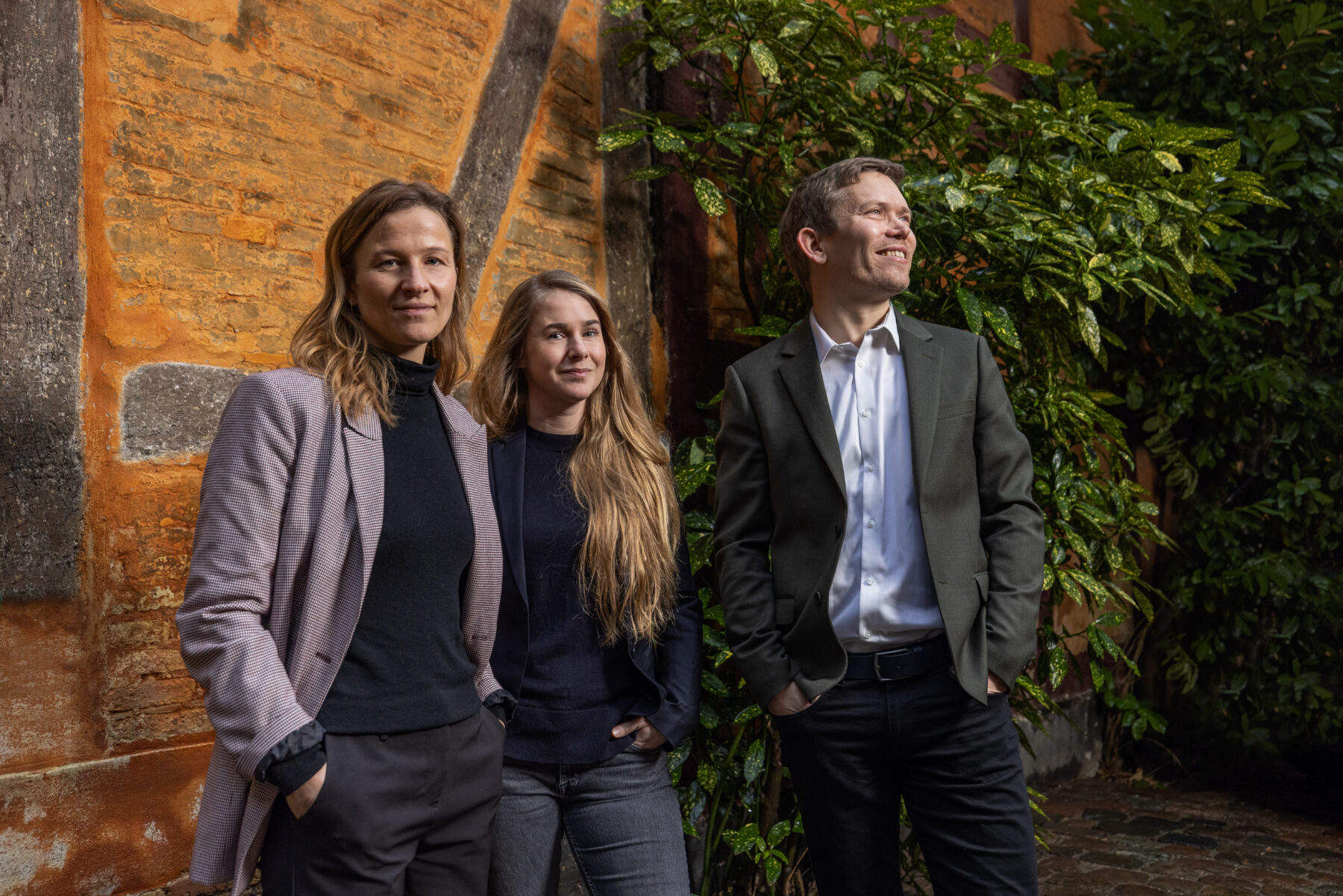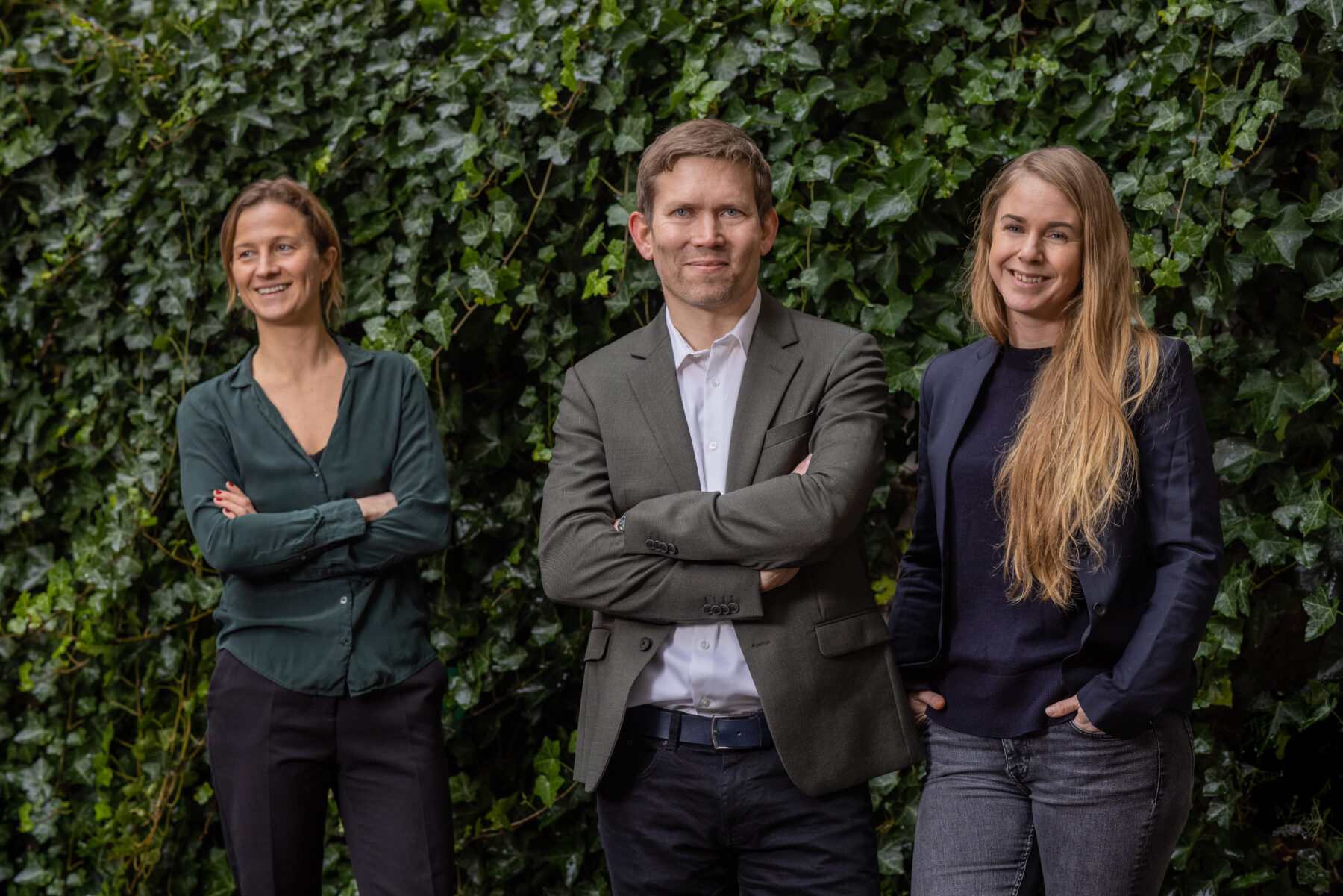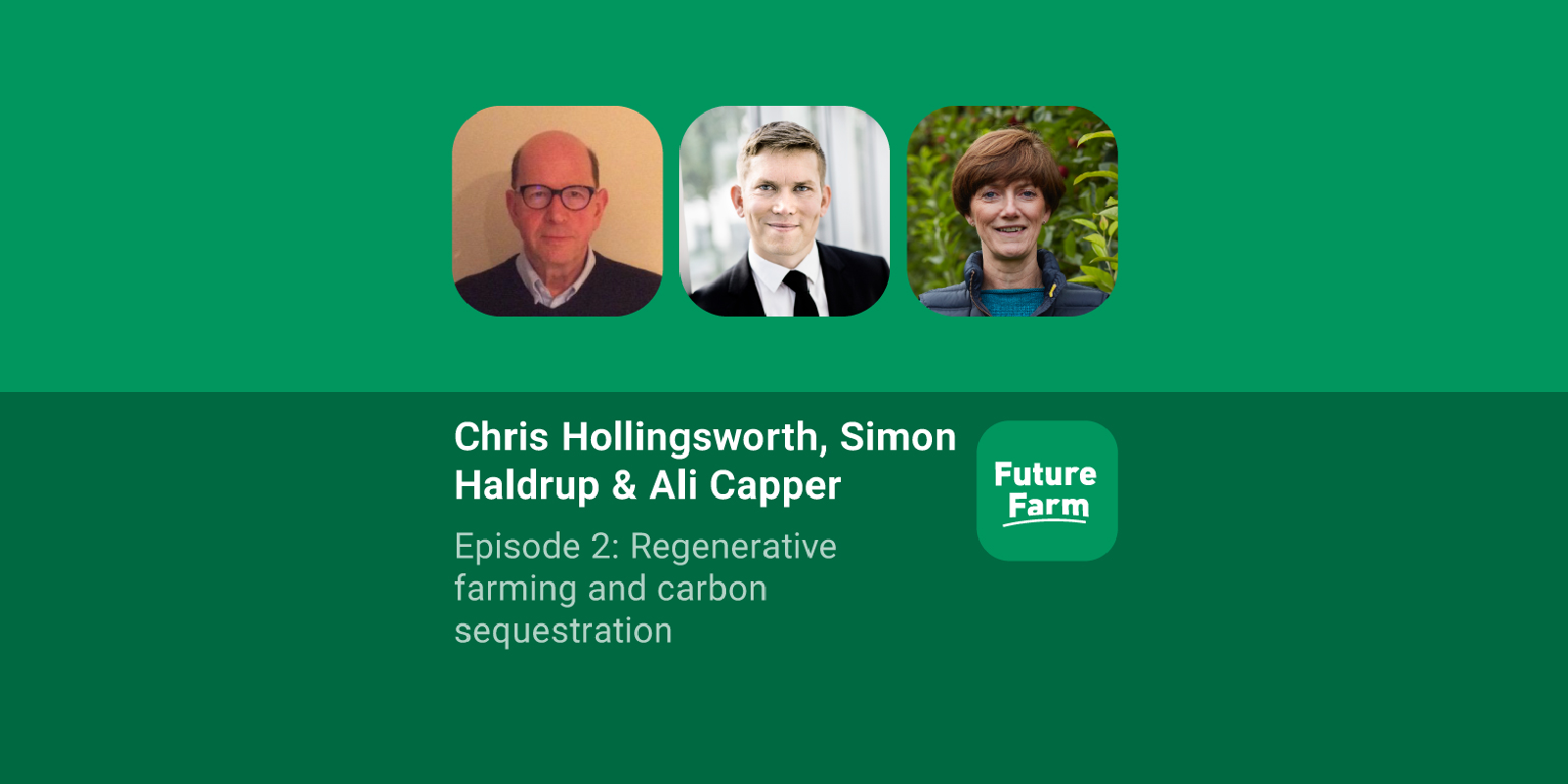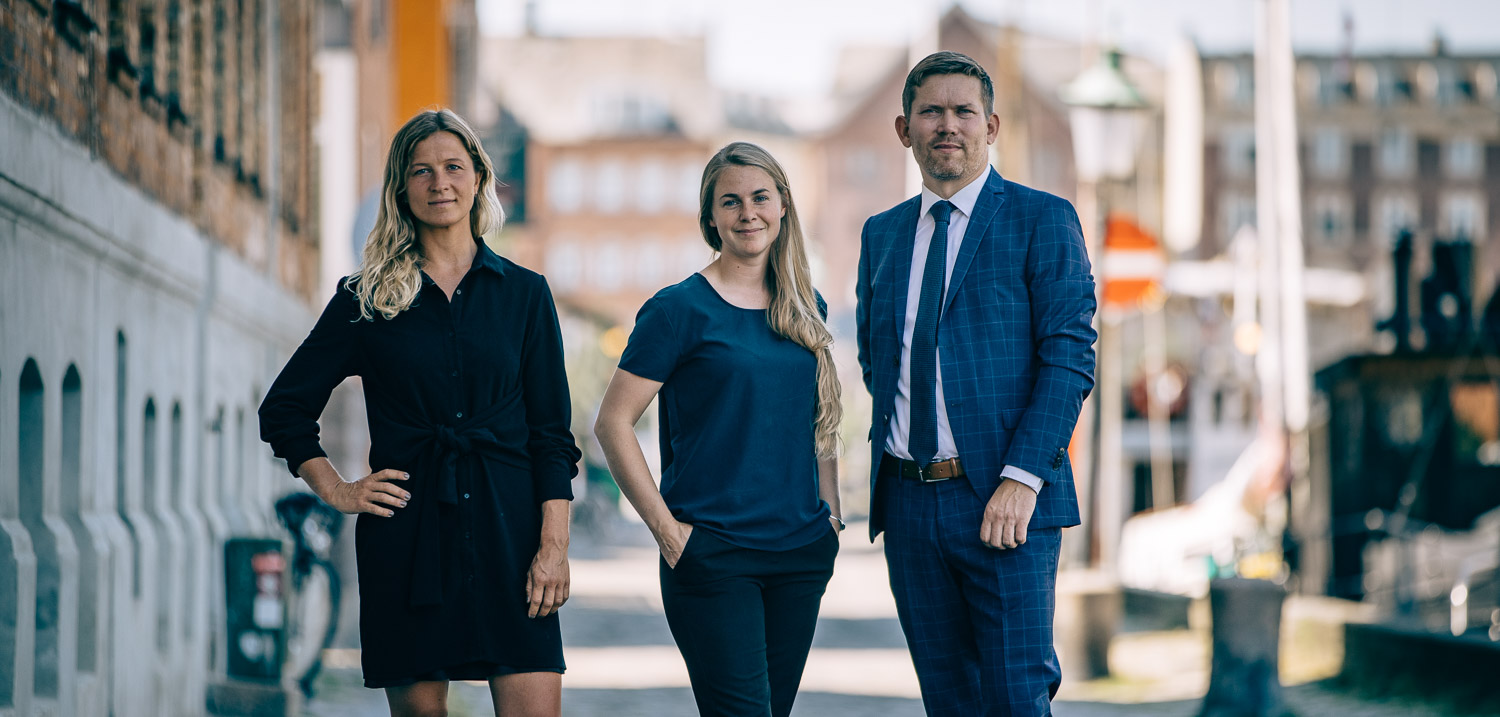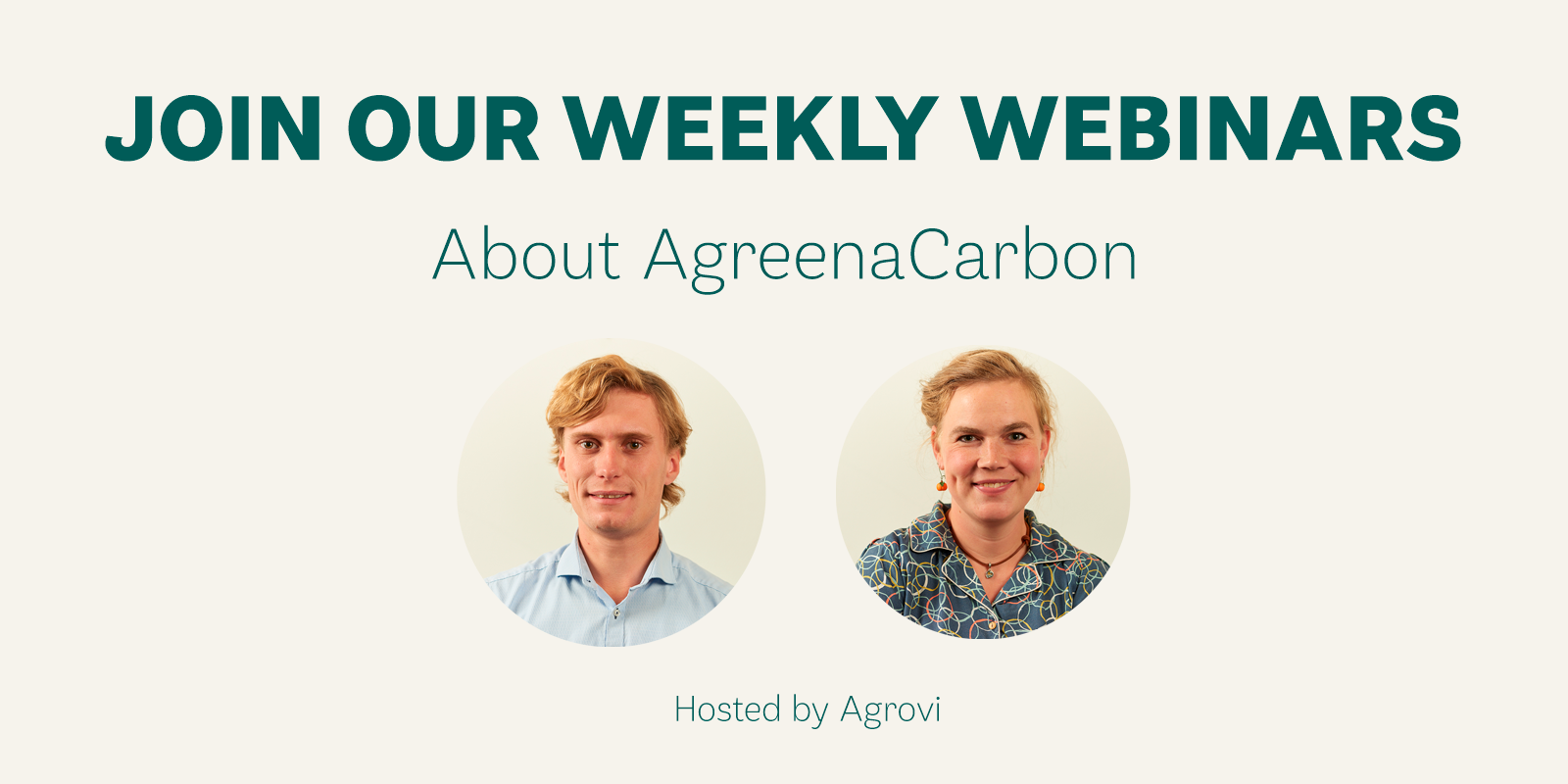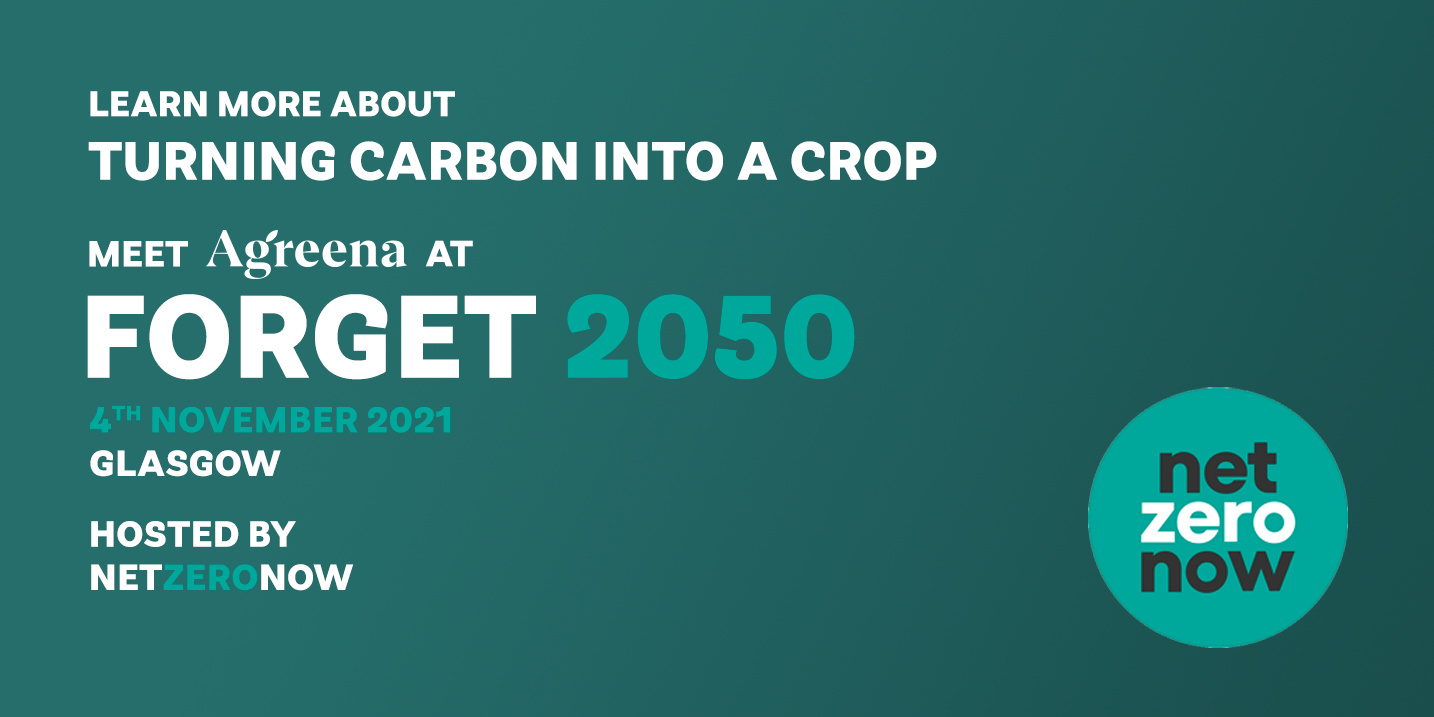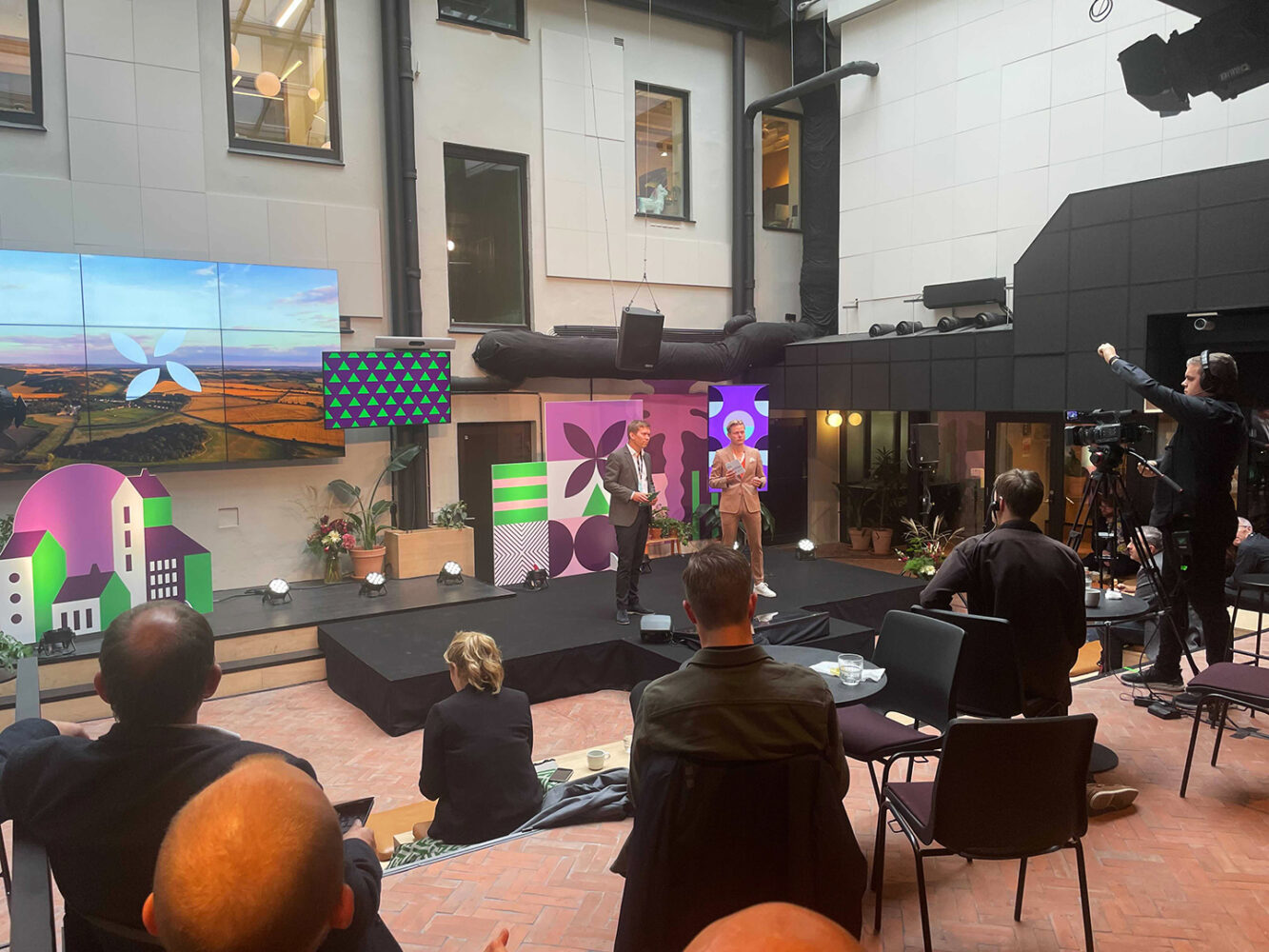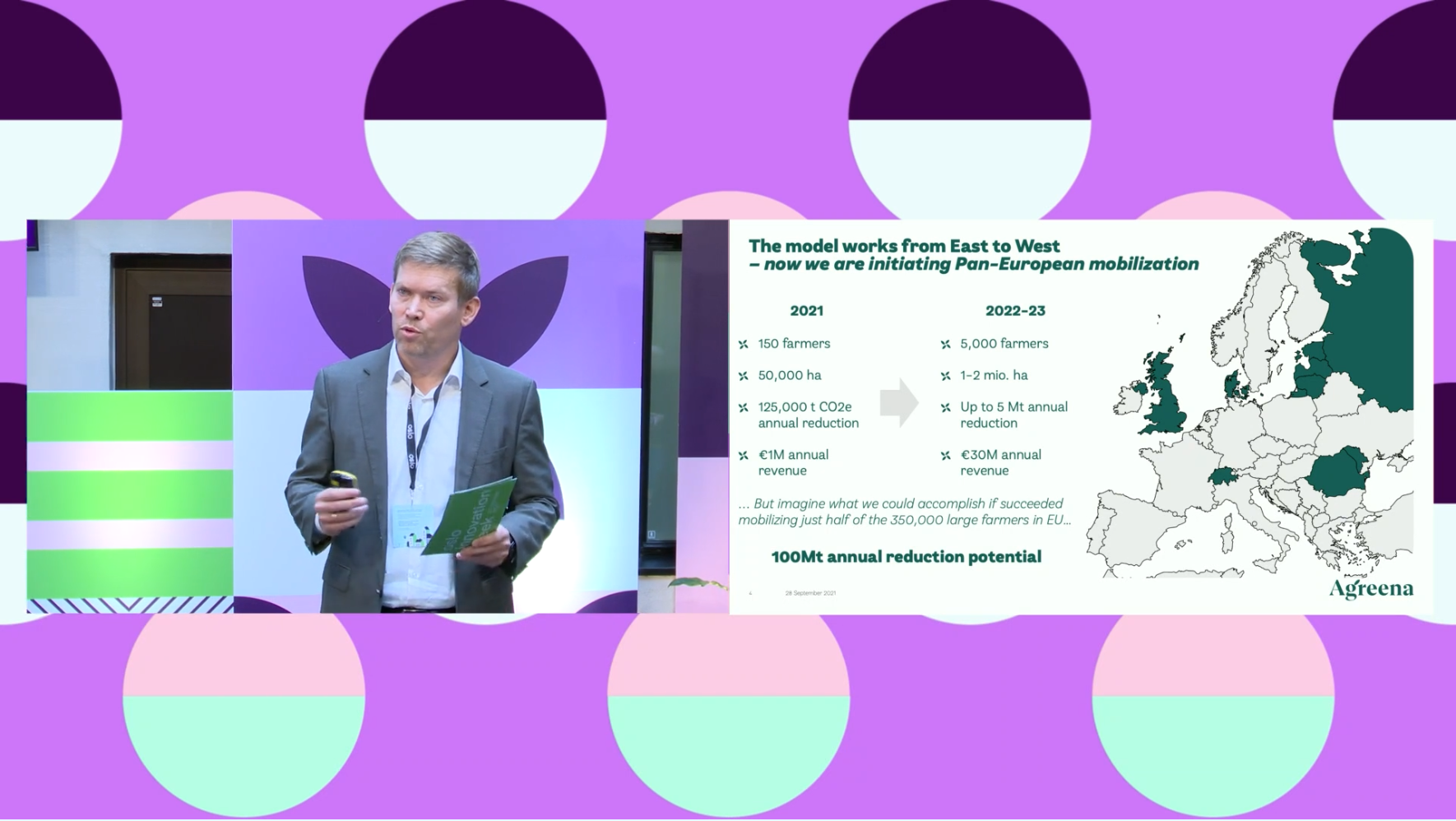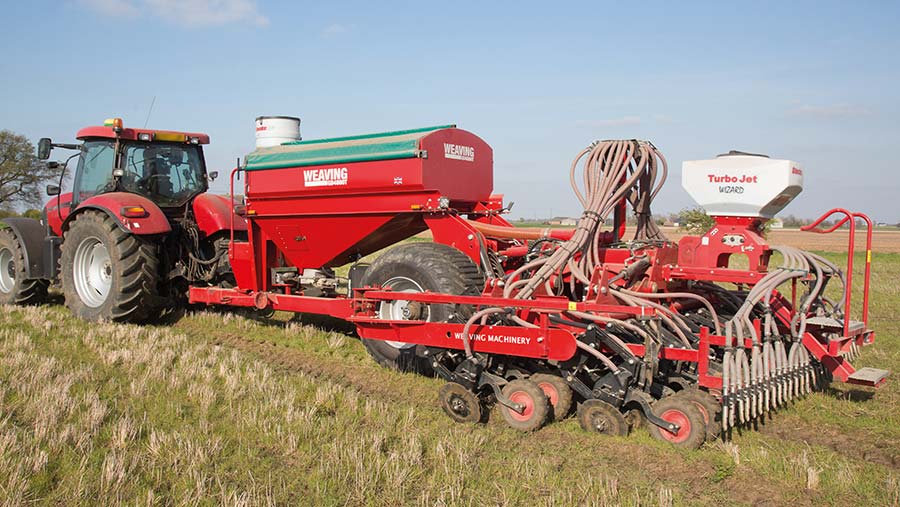“Farmer’s fintechs” are turning Europe’s farms into carbon sinks
“Farmer’s fintechs” are turning Europe’s farms into carbon sinks
Agreena has raised $22.5m for its platform assigning carbon credits to farmers
Soils are a massive carbon sink, second only to the ocean in their carbon absorption power. And given that nearly 40% of the EU is farmed land, there’s a huge opportunity to sequester large amounts of carbon from the atmosphere.
The problem? There hasn’t been much of a financial incentive for farmers to increase the carbon sink potential of their land — and farming is already a low profit margin industry, so that really matters.
But where there’s a will, there’s a startup.
Copenhagen-based Agreena has just raised a $22.5m Series A for a platform where farmers can earn carbon credits for turning their land into carbon sinks.
Those credits can be sold on voluntary carbon markets (where companies rather than countries buy credits to offset their emissions). The credits give farmers on average a 20% boost on the profitability per hectare of land.
The round was led by Kinnevik alongside Giant Ventures, Vækstfonden (the Danish state’s investment vehicle) and agriculture angel investors. Agreena’s grown fast; it launched in 2020 and raised a seed round last October.
It’s part of a wave of startups who’ve cottoned onto the sustainability — and financial — potential of carbon credits in farming. The price of these credits is skyrocketing; it increased threefold in six months last year, to $14 each.
Agreena faces competition from Soil Capital, a French-British startup, and eAgronom, an Estonian company which just closed a $7.4m Series A. The biggest name globally is Indigo, an American startup.
Turning farms into sinks
Simon Haldrup, founder of Agreena, says the company helps farmers overcome two barriers.
“One is the knowledge barrier, because this is new to a lot of farmers. And second, we help to commercialise their adoption of regenerative practices by giving them access to the voluntary carbon markets.”
Farmers can increase the carbon potential of their land by tilling it less. This is when farmers plough the soil between crops. Tilling can reduce the land’s water and nitrate absorption qualities, meaning the soil’s quality depreciates, and, critically for emissions sequestration, it also releases carbon into the air.
It’s also about the type of fertiliser they use and the “cover crops” they plant between food crops. Cover crops are plants which feed the bacteria and fungi in the soil, increasing the soil’s carbon levels.
Farmers input data on their land into Agreena’s platform, creating a baseline understanding of the land’s quality. The farmer then plans for the next harvest, committing to certain actions that increase the land’s carbon sink potential.
At the end of the harvest, satellite imagery and a third party verifier are used for Agreena to assign a certain amount of credits to the farmer for the changes they’ve made to their land.
“Farmers will earn approximately two credits, some more, some less, per hectare,” says Haldrup.
The financials
Once assigned those credits, the farmer can sell them on the voluntary market — usually to corporate companies looking to offset their emissions.
Haldrup estimates that a credit could be sold at about €15, meaning an extra €30 per hectare on average. Given that the average profit margin per hectare is about €150, according to Haldrup, that is a significant contribution. The extra profit can also offset the costs of transitioning to more regenerative agriculture.
Agreena monetises itself by retaining a 15% cut of the certificates it issues and selling that on the market.
Regulating the market
Agreena uses a third party verifier to check its credits. That’s not something that’s a given — the quality of carbon credits is a controversial topic at the moment.
The voluntary market has lacked regulation and people have been free to issue credits for uncertified projects which, in practice, don’t do much to help the environment (Finnish not-for-profit Compensate is good on this — they assess the credentials of projects).
Now some countries are starting to issue guidance on what can constitute a carbon credit on the voluntary market.
Haldrup welcomes regulation — it’s something that will bring more integrity to the market; could drive the price farmers can get for quality credits up; and will increase the importance put on developing proper carbon sequestration practices.
“There’s millions of hectares of arable land and it’s about putting a currency on that land’s potential,” says Haldrup. “And I think the significance of that move is still a bit of a secret to the public.”

NEWS RELEASE: Agreena secures €20M to cultivate carbon farming market
AGREENA SECURES €20M TO CULTIVATE INTERNATIONAL CARBON FARMING MARKET
Danish AgTech startup Agreena has raised a €20M Series A round to enhance its regenerative farming carbon certificates with a new classification system and novel carbon farming marketplace
(February 15, 2022) – Bulking up its employee headcount by a factor of four since its seed funding, Copenhagen-based Agreena has expanded its leadership team and new operations out of key European ag hubs, including the United Kingdom. Led by European growth-stage investor Kinnevik, the €20-million Series A round included continued participation from existing investors Giant Ventures, Vaekstfonden - the Danish states’ investment fund, and farmer angel investors. Scaling its solution to support farmers in eight countries across the pan-European landscape in its first year, the company is gearing up for larger expansion. With its latest funding the startup on a hiring spree says it will enhance its protocol and vertically integrated tech-stack with blockchain for greater market transparency and traceability, while enabling new financing solutions for farmers in the future.
“The genesis of our company is deeply rooted to farmers, and with a strong fintech backbone, our mission, aligned with our investors, is to break down barriers for farmers so they can maximize their thin margins while simultaneously making the world a better place,” said Simon Haldrup, co-founder and CEO of Agreena. “With both our climate and our soils in a state of emergency, farmers who have historically been singled out to blame now have the opportunity to become the heroes of future generations – and get paid.”
Last year Agreena became one of the first European companies internationally accredited to quantify, measure, report and verify greenhouse gas (GHG) reductions and removal enhancements focused specifically on soil and sustainable farming techniques. AgreenaCarbon farmers work with the company and expert agronomists to develop detailed plans for regenerative agriculture practices to be adopted each annual harvest cycle that reduce GHG emissions and sequester carbon in the soil.
“The necessary transition to more sustainable farming is an impactful and sizable climate opportunity. We have been impressed by the Agreena founding team and their nimble and thoughtful approach to supporting farmers in transitioning to regenerative practices, enabling carbon capture and restoring biodiversity,” said Magnus Jakobson, investment director at Kinnevik. “As a long-term investor, we take a multi-generational approach and truly believe that to be a successful company you need to be part of the solution.”
Winning innovation awards for its scalable impact approach, Agreena combines field-level practices with advanced technologies to capture the climate impact farmers make by coupling five years of ground-truth data with an IPCC-aligned GHG farm model developed by top-tier universities that is overlaid with soil and climatic data inputs. Using low-orbit satellite data combined with NDVI algorithms to track green biomass and to continuously monitor fields, Agreena runs an advanced big data analytics protocol to identify cases of deviation that triggers follow-up actions with farmers and performs annual physical site visits.
Doubling down on the validity of the sustainable farming practices implemented, additional field inspections are conducted by an independent third-party verification body prior to Agreena issuing CO2-e certificates, which can then be used to offset unavoidable emissions in the voluntary carbon market.
Receiving attention from international investors, corporates, and global leaders alike, the voluntary carbon market is stepping in as a prominent player to address what many consider to be the greatest challenge of our time. Reaching the objectives of the Paris Agreement and the IPCC’s recommendation to limit global warming to 1.5-degree in relation to pre-industrial levels for climate neutrality by 2050 requires not only massive emission reductions but also negative emissions, or carbon dioxide removals.
With 34% of the world’s largest publicly traded companies already having committed to net-zero targets, demand for quality carbon removal credits will continue to rise in the years ahead to achieve ambitious corporate climate goals. Nature-based solutions, such as soil sequestration, are the most cost-effective mitigation measure. Haldrup says that this year Agreena is enhancing its protocol and building out a classification system, creating a distinction between its reduction and removal certificates for the voluntary carbon market.
“But regenerative farming is not all about turning soil into carbon sinks,” adds Haldrup. “From day one, our program was developed with agronomists that are experts in conservation agriculture. Our entire suite of practices provide a plethora of benefits beyond soil health and management – boosted nutrients and biodiversity, improved water infiltration, enhanced ecosystems, and healthier crop yields.”
Agreena wants to capture this, too. Improving soil quality is integral to achieving the Sustainable Development Goals (SDGs), in particular, the Goals on zero hunger, climate action, and life on land. Haldrup says the company is currently evaluating SDG impact quantification and reporting tools which can be attributed to individual certificates in the future to capture the full impact created by AgreenaCarbon farmers, and add value to the voluntary carbon market.
“Kinnevik has placed sustainability as an integrated part of their business model with a strategy aligned to the UN 2030 Agenda and the Sustainable Development Goals,” says Haldrup, adding that this makes them, and all of Agreena’s impact investors particularly exciting partners to be working with at this stage of the company.
The FutureFarm Podcast – Episode 2: Regenerative farming and carbon sequestration
The FutureFarm Podcast – Episode 2: Regenerative farming and carbon sequestration
In this episode of FutureFarm Podcasts, FutureFarm discuss the benefits of regenerative farming with regard to carbon sequestration. Chris Hollingsworth provides a personal insight into the business benefit, having made the switch to regenerative farming 5 years ago.
Simon Haldrup, CEO of Danish environmental and sustainability company Agreena tells us how sequestered carbon is measured and turned into valuable certificates. Policy expert Ali Capper explains some of the remaining barriers and what needs to be done to get over them.
Carbon farming could provide environmental and income boost
Carbon farming could provide environmental and income boost
An EU initiative aiming to increase carbon sequestration may boost the income of farmers, along with providing an environmental benefit.
The European Commission is expected to publish a policy document on its carbon farming initiative on Wednesday (December 15).
The EU Commission is proposing to reach climate neutrality in the entire land sector by 2035, which would mean that carbon removal should balance greenhouse gas (GHG) emissions from all land, livestock and fertiliser use.
Along with the environmental and climate change benefits, the EU believes that the initiative would also be a new source of income for farmers.
Frans Timmermans, vice president of the European Commission, recently told a conference organised by the Intereg North Sea Region Programme that “with carbon farming, climate action becomes a business opportunity”.
He said expanding the model across the EU will need public and private funding.
Simon Haldrup, from agricultural technology company, Agreena, said “it is encouraging to see movement coming from international leaders”.

Simon Haldrup, Co-founder and CEO : Working To Enable Environmental and Financial Sustainability in Agriculture
Simon Haldrup, Co-founder and CEO : Working To Enable Environmental and Financial Sustainability in Agriculture
Our Co-founder and CEO, Simon Haldrup had a chat with beststartup.eu about where Agreena is at the moment as a company, and where were headed.
Simon goes (a bit) into detail about, not only the inspiration behind Agreena, but also about our "magic sauce" that sets us apart from the competition.
Learn more about our "magic sauce", our 5 year scope and a few of our setbacks in the full article below.

Learn more about AgreenaCarbon - Join our webinars
There's still plenty of available chairs for our online webinars
We're still hosting our recurring webinars on AgreenaCarbon, hosted by our friends and partners Agrovi.
The webinars are available both in English and Danish, and will cover general questions related to AgreenaCarbon, but will also open up for the opportunity of diving into the specific fields of the individual attendees.
The webinar will last approx. 1 hour and Agrovi would very much like to answer any questions you may have. If there are current topics that are relevant to address on one of these webinars, Agrovi will of course do so.
Meet Agreena at 'Forget 2050 - The Climate Crisis Cannot Wait!"
Meet Agreena at 'Forget 2050 - The Climate Crisis Cannot Wait!"
Agricultural soils can reverse the climate crisis - and we believe we have a good solution to activate this.
So we are thrilled to be invited to join the Net Zero Now event during the COP26 in Glasgow this year.
We are proud to be on stage at the event - "Forget 2050 - The Climate Crisis Cannot Wait!” hosted by Net Zero Now on the 4th of November.
We will also be available for questions and a general chat from our booth from 11:00-14:00 - so come by and learn how we’re planning to remove carbon footprints by utilising European soils.

Agreena raises $4.7M Seed from Giant Ventures
Agreena raises $4.7M Seed from Giant Ventures
Watch: Agreena presents at Oslo Innovation Week 2021
Agreena presents at Oslo Innovation Week 2021
Yesterday we had the great pleasure of presenting Agreena at Oslo Innovation Week ’21.
It was very insightful to meet likeminded growth companies from across the Nordics, who are all working on making a positive impact on our climate.
You can watch or re-watch the presentations on OIW’s website here.
Pssst! Agreena takes the stage at 1:15:58.
How new carbon offset scheme for regenerative ag works
How new carbon offset scheme for regenerative ag works
The first UK-certified soil carbon offsetting scheme is available to farmers who use regenerative agriculture practices, offering them a commercial opportunity worth up to £100/ha from sequestering carbon in their soils.
Called Gentle Farming, the fledgling system allows participating farmers to track carbon sequestration throughout the year, look at ways to change the eventual outcome and take steps to improve it.
Once harvest is over, soil carbon storage measurements are independently verified, with certificates issued, allowing farmers to sell these certificates and get financially supported and rewarded for their environmental practices.
It has been developed by Thomas Gent of Gentle Farming in partnership with Commodicarbon, a Denmark-based platform, which has a carbon certification programme that quantifies the soil carbon sequestration associated with reduced tillage and its changing crop management.
Income boost
With the potential to boost farm incomes by an estimated £90-£150/ha, the system works for each crop year and will continue to evolve as new methods and technologies become available, explains Mr Gent.
“Every farm is different and there are a number of factors to take into account, but an average figure for a no-till farm is 2-3t carbon dioxide equivalents per hectare,” he says.















